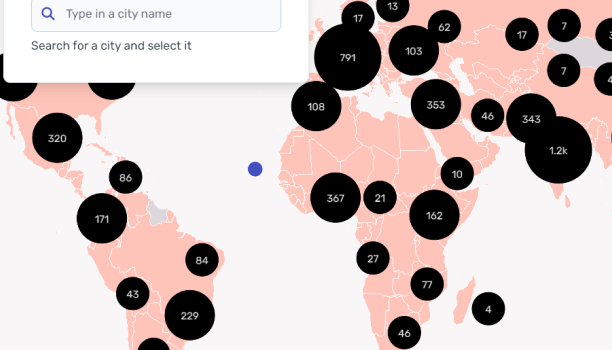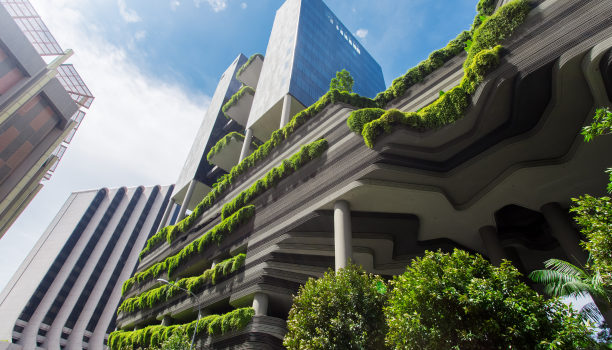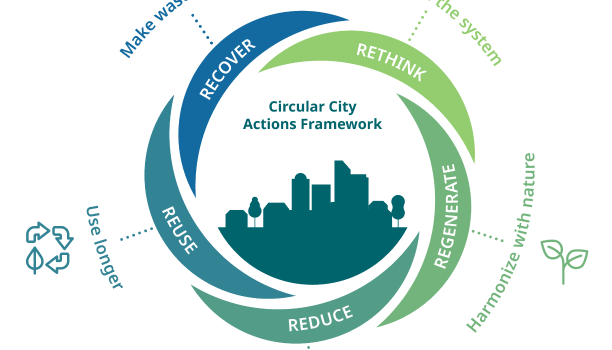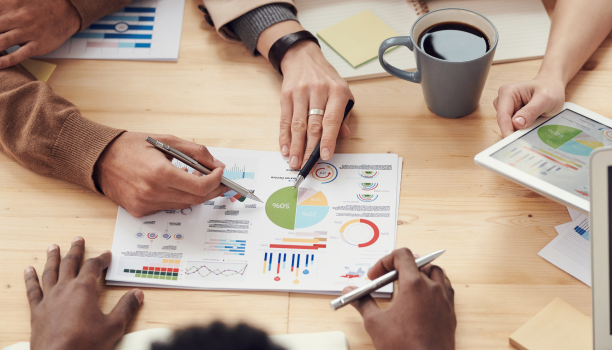What is a circular city?
Find out what a circular economy can do for cities and learn from examples of other circular cities.

Cities are the epicentres of our global system
With urban populations climbing, a rise in resource consumption is expected to meet residents' needs through new infrastructure and products.Given their significance, cities have the potential to address these challenges, as they are hubs for
 Innovation
Innovation Business
Business Work
Work- Promoters
- Cities can promote the circular economy by acting as a role model, providing clear information and establishing a visions, goals and targets
- Facilitators
- Cities can facilitate connections and dialogue and provide soft and hard infrastructure for new circular businesses
- Enablers
- Cities can create the enabling conditions for the transition to a circular economy and trigger circular change through regulations and incentives
What the circular economy can do for cities:
Cities are key drivers of the transition to a circular economy, which has been identified as way to transit to a low carbon economy through a more efficient use of resources, more sustainable consumption and production patterns in cities.
Reduce greenhouse gas emissions
Save on landfilling costs
Improve material security
Create new livelihood opportunities
Spur local value creation
Circular actions for cities
The Circular City Actions Framework was developed by ICLEI, Circle Economy, Metabolic and the Ellen MacArthur Foundation to introduce cities to the range of strategies and actions available to them as they work towards circular development at the local level.





'Loading...'

Learn about the circular economy through a game!
Challenge linearity and adopt the basics of circularity through games. Play the ‘Introduction to the circular economy’ track from Circularity Academy!
The Circular City Center
To support EU cities to become circular, the Circular City Center (C3), as part of the European Investment Bank, has developed a number of valuable resources.
Ganbatte helps you explore data-driven insights, solutions, tools and practical examples of the circular economy that can help your city achieve its climate and sustainability goals.
Ganbatte helps you explore data-driven insights, solutions, tools and practical examples of the circular economy that can help your city achieve its climate and sustainability goals.
- Circularity Assessment Tool
- Circularity Academy
- MyGanbatte
- Privacy Policy
- Terms & Conditions
- Cookie policy
© 2024 Circle Economy Foundation. All rights reserved.




